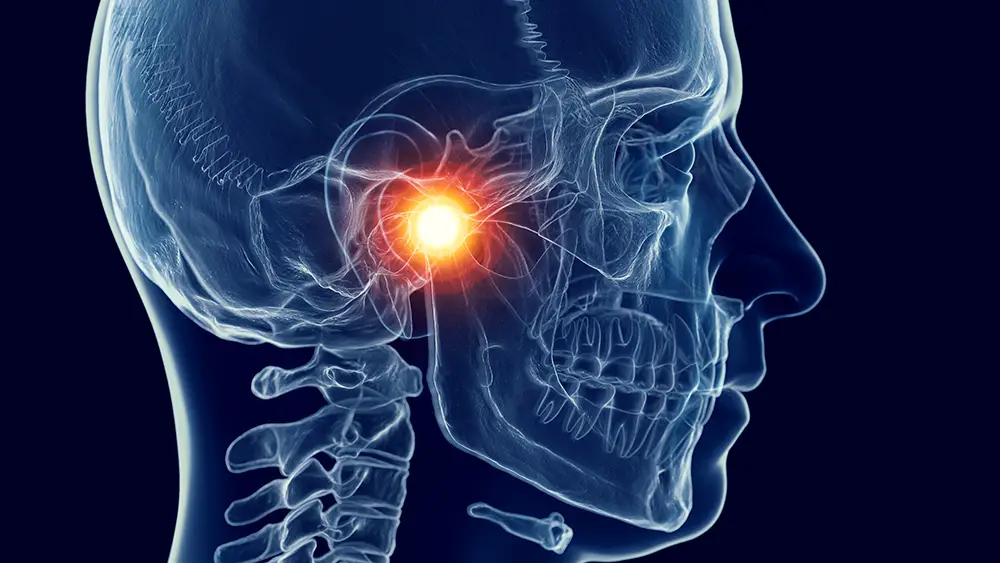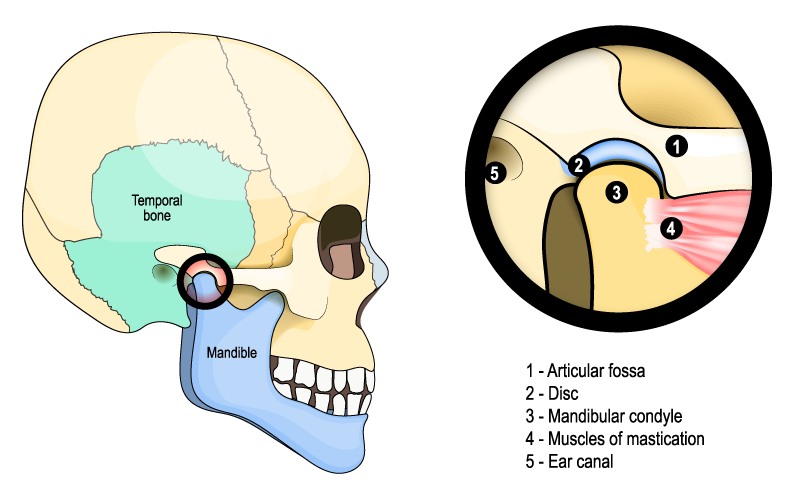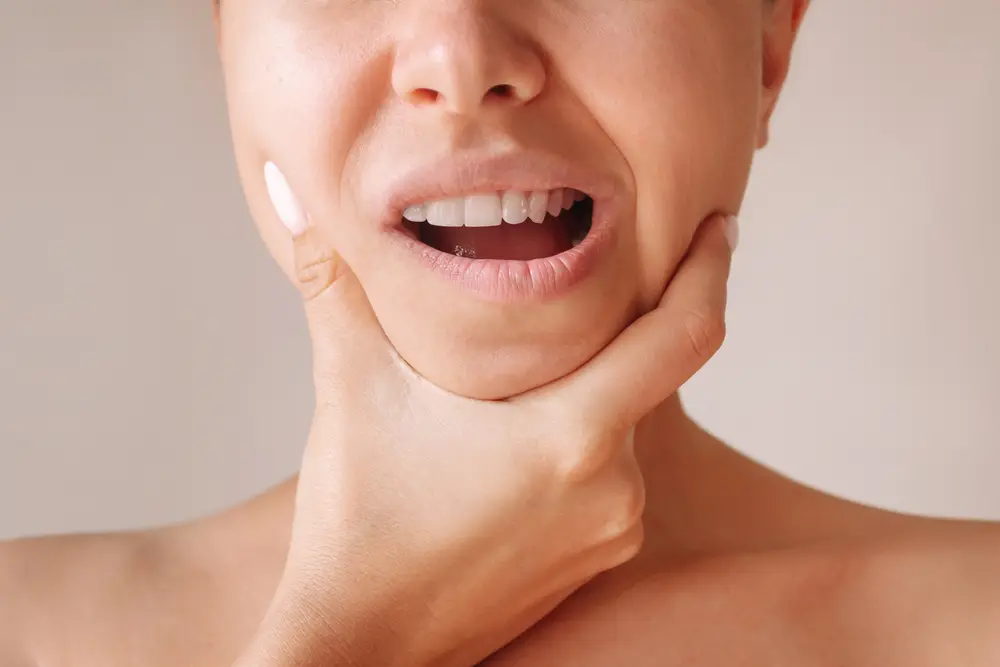TMJ and Jaw Pain
At Kendrick Orthodontics, our TMJ treatment focuses on resolving the underlying cause rather than merely alleviating symptoms temporarily. Our approach ensures a permanent, non-invasive solution that eliminates pain and discomfort for good. Beyond straightening teeth, we specialize in achieving a proper bite alignment that harmonizes the TM joint. Our aim with every patient is to provide relief from TMJ disorders and deliver a beautiful, confident smile.
Want to learn more about TMJ, jaw pain, and airway-focused treatment options? Click here to see our full TMJ & Airway page.

TMJ/JAW PAIN
What is TMJ Disorder?
TMJ disorders present in various forms, ranging from mild to severe pain that can significantly impact daily life. Symptoms include common issues such as headaches, jaw pain, and difficulty opening the mouth, as well as surprising symptoms like ringing in the ears, tingling in the arms, and sinus pain.
The development of TMJ disorders can often be attributed to two main factors: stress and misalignment of the bite relative to the jaw joint’s optimal position. Determining the correct alignment of the bite and jaw joint is complex and requires the expertise of a TMJ specialist like Dr. James Kendrick at Kendrick Orthodontics. With extensive experience in treating thousands of patients, Dr. Kendrick can accurately diagnose the condition, address its root causes, and provide a permanent, non-invasive solution.
Temporomandibular joint (TMJ) disorder is not a specific disease but a collection of symptoms caused by abnormalities in the function of the temporomandibular joints. It may lead to symptoms such as jaw pain, muscle tension, clicking sounds in the jaw, ear pain, or ringing in the ears. TMJ disorders are also known as Temporomandibular Disorder (TMD), TMJ syndrome, or temporomandibular joint syndrome, and they can cause varying degrees of discomfort from mild to severe.
How Does Temporomandibular Joint Disorder occur?
Symptoms of TMJ Disorders
Jaw Pain
Persistent pain in the jaw joint, either on one side or both sides of your face. This is the most common symptom of TMD.
Headaches
Frequent headaches, especially in the temples, can be a common symptom of TMJ disorder. These headaches often mimic migraines, causing significant discomfort and disrupting daily activities.
Clicking and/or Popping When Opening and Closing Your Jaw
You may hear clicking, popping, or grating sounds in the jaw joint when you open or close your mouth. These sounds can be alarming and may be accompanied by pain or discomfort in the jaw.
Neck & Shoulder Pain
Pain radiating from the jaw to the neck and shoulders is a common symptom of TMJ disorder. This pain can be chronic and may contribute to overall discomfort and stiffness in the upper body.
Ear Pain
Pain or discomfort in and around the ears is another symptom of TMJ disorder, even when there is no infection present. This ear pain can feel like a persistent ache or sharp, intermittent pains.
Dizziness
Occasional dizziness or a feeling of imbalance can be linked to TMJ disorder. This dizziness can affect your ability to concentrate and carry out routine tasks safely.
Limited Jaw Movement
TMJ disorder can cause a feeling of your jaw getting stuck or locked in an open or closed position. This limited movement can interfere with speaking, eating, and other everyday activities.
Difficulty Chewing
Pain or discomfort while chewing or biting is a common symptom of TMJ disorder. This often feels like your teeth do not fit together properly, making eating a challenging task.
Swelling
Swelling on the side of your face is a visible symptom of TMJ disorder and can be accompanied by tenderness in the affected area. This swelling can cause noticeable asymmetry in your facial appearance.
Frequently Asked Questions
What is TMJ?
“TMJ” stands for Temporomandibular Joint, which refers to the two joints on each side of your head that connect your jaw to the bones of your skull, located right in front of your ears. These joints are the most complex in your body, relying on both sides to work together seamlessly for proper function.
Your jaw joints are the busiest in your body, constantly working as you eat, speak, sing, yawn, and even grind your teeth at night. The first step in achieving fast and effective treatment and pain relief is to evaluate the position and health of your jaw joints.
These delicate and complex jaw joints are unique because they are the only joints in your body that both rotate and slide, held together by your lower jaw.
A less common term used to describe TMJ and jaw pain is TMD (Temporomandibular Disorder). Generally, TMD or TMJ is used to refer to any problems or issues related to the TMJ and its surrounding structures.
At Kendrick Orthodontics in Kissimmee, Florida, we specialize in diagnosing and treating TMJ disorders to help you find relief and improve your quality of life.


Why does my jaw joint hurt?
Sometimes an uneven bite, injuries, missing or worn teeth, crowding and other conditions upset the way the jaw and the chewing muscles work together. This may cause headaches, face, jaw, neck and shoulder pain and other problems with your joints. Stress can also play a role in TMJ disorder and jaw joint pain.
At Kendrick Orthodontics, Dr. James Kendrick will comprehensively evaluate you for abnormalities and discrepancies in your bite, teeth, jaw joints, airway and surrounding structures in order to give you a comprehensive, non-invasive treatment plan.

How TMJ and Other Health Issues are Interconnected
TMJ problems are often more frequent in females than males. These issues are commonly found in individuals with lower jaw retrusion, more commonly referred to as an overbite. A retruded jaw can lead to sleep issues due to obstructed airways. During your visit, Dr. Kendrick will thoroughly check for airway obstructions and sleep apnea conditions to properly diagnose any underlying issues. Ensuring a comprehensive evaluation helps in providing targeted and effective treatment for TMJ and related health concerns.
What is the Best Treatment for TMJ Disorder?
The first step in determining the right treatment for TMJ disorder is a comprehensive diagnosis to identify the underlying cause. Dr. Kendrick’s extensive experience with TMJ patients, coupled with his thorough examination process, ensures an accurate diagnosis for each patient.
At Kendrick Orthodontics, we believe that the best treatment is both conservative and effective. We offer non-invasive, permanent solutions that address the root of the problem, helping you achieve long-lasting relief.


Thousands of patients have achieved permanent relief from TMJ disorder symptoms by addressing the root cause of the issues.
There are many advantages to receiving treatment. After undergoing temporomandibular joint treatment, you can experience improved chewing and biting, enhanced overall oral appearance, and a better jaw structure. Other benefits include reduced painful headaches and toothaches, as well as easier movement while talking, yawning, and chewing.
While many TMJ patients experience permanent relief, it cannot be guaranteed for everyone. Each case is unique, but the TMJ specialists at Kendrick Orthodontics in Kissimmee have extensive experience and always strive to provide the ideal treatment for every patient.
